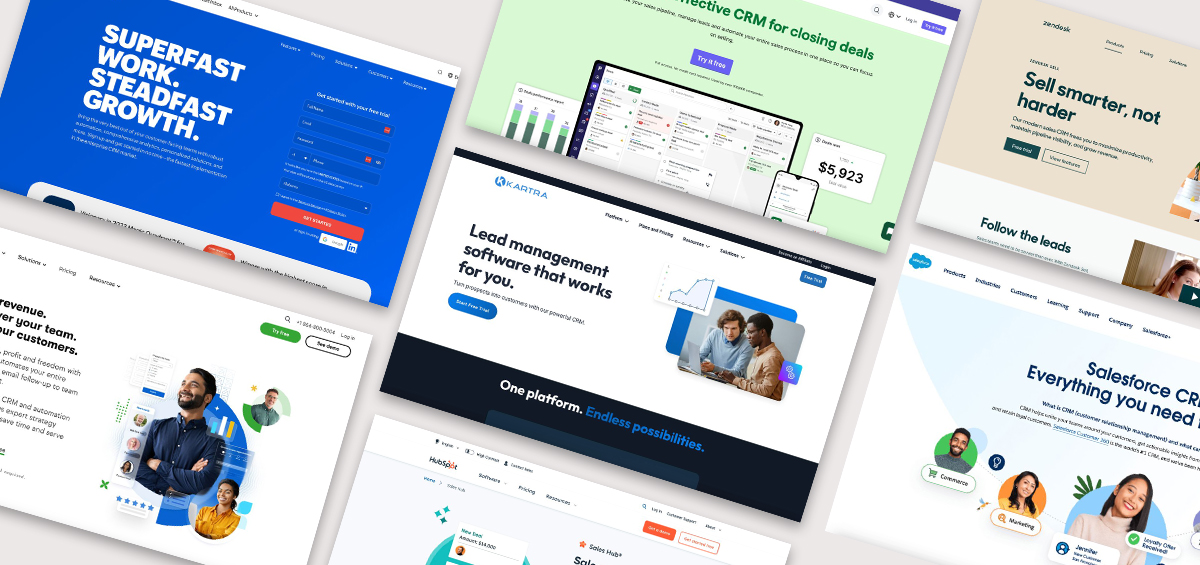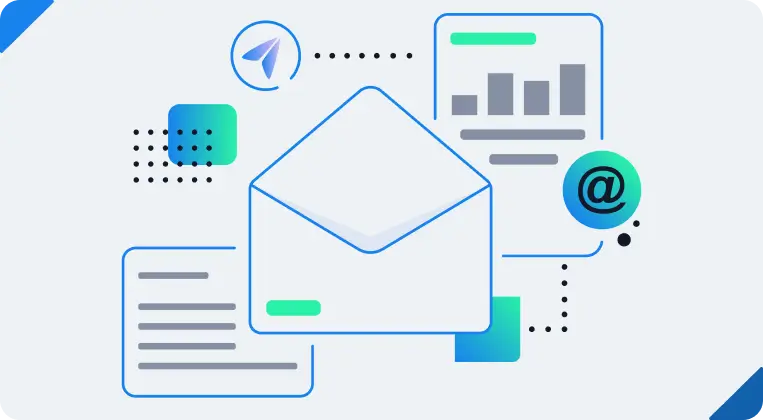What is Email Marketing?
Email marketing is a form of direct marketing that uses electronic mail (email) to communicate with an audience. In its broadest sense, every email you send to a potential or current customer is email marketing. You can use email to send advertisements, make sales, send subscribers to a website, and much more. Sending emails can also help you build loyalty, trust, and brand awareness.
Understanding the Basics of Email Marketing
Email marketing is an important part of digital marketing because it gives you the ability to communicate directly with your subscribers. It involves crafting messages to meet your business goals.
Why Use Email Marketing?
Firstly, in online marketing spaces email marketing is commonly referred to as the “King of ROI,” and for good reason.
You see, according to Constant Contact, every $1 spent on email yields a $36 ROI. Meaning if you spend $1,000 to grow your email list, you could earn $36,000 in revenue over time!
Secondly, according to Invesp, turning an inactive subscriber into a customer is 5X cheaper than acquiring a brand new customer.
But that’s not all.
In addition to helping you make and save a ton of money, email marketing is one of the most effective ways to:
- Connect with your audience in a personalized way.
- Promote your brand every day so you stay top of mind.
- Drive traffic to your website, social media channels, and more.
- Generate leads for your premium programs and services.
- Talk to people about what you sell in a leveraged way.
- Provide value and help your audience achieve their desired result.
Core Elements of Email Marketing:
- Targeted Communication: Email marketing lets you send targeted messages to specific groups of people based on their preferences, behaviors, demographics, or engagement with your marketing. This is different from traditional advertising.
- Personalization and Customization: You can personalize emails based on your subscriber data. This could be as simple as including the subscriber’s name in the email. I can be as complex as tailoring the content to their past behaviors or interests.
- Measurable Results: One of the strengths of email marketing is its measurability. Tools are available to track open rates, click-through rates, conversion rates, and even the exact ROI of each campaign.
- Cost-Effectiveness: Compared to other forms of marketing, email marketing is pretty inexpensive. It allows you to reach a large audience without the high costs of print or media advertising.
- Automation: Automated email campaigns save time and resources. You can use automation to send birthday emails, remind customers about abandoned carts, or follow up after a purchase.
- Direct Traffic to Other Channels: You can use email marketing to bring more people to your website, blog, or social media. It works well in conjunction with your other marketing plans.
How Can Email Marketing Benefit Businesses?
Email marketing is a dynamic and versatile tool that offers a range of benefits for businesses of all sizes. It stands out as an effective way to connect with customers, boost sales, and enhance brand visibility.
Key Benefits of Email Marketing
Enhanced Customer Engagement
Email marketing helps you stay in touch with your customers, even when they’re not buying anything. Sending regular updates, useful content, and newsletters keeps the conversation going. This constant engagement keeps your brand at the forefront of customers’ minds.
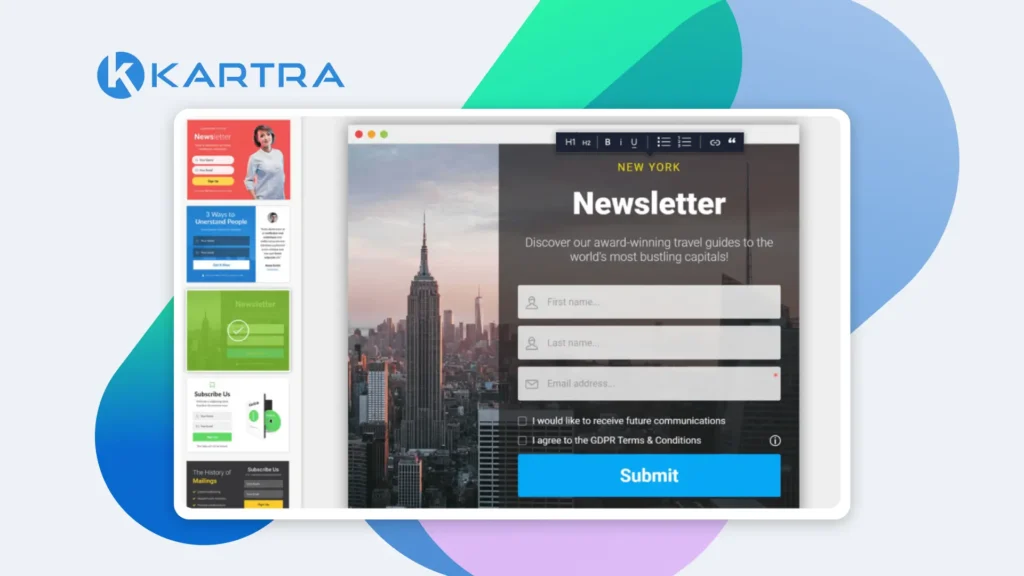
Building Customer Loyalty
Consistent and valuable communication via email strengthens customer loyalty. When you offer exclusive deals or share insider news, your subscribers feel appreciated and valued. This sense of exclusivity encourages them to stay loyal to your brand.
Increased Sales and Conversion Rates
One of the direct impacts of email marketing is on sales and conversion rates. Targeted offers and well-timed promotional emails can stimulate immediate purchases. Personalizing these offers based on customer behavior or preferences increases their effectiveness.
Cost-Effective Brand Awareness
Email marketing is a budget-friendly strategy that can reach a broad audience. Email marketing is cheaper than traditional advertising and reaches a lot of people.
Gathering Valuable Data and Insights
Email campaigns are a rich source of data about customer preferences and behaviors. Analyzing this data helps businesses improve their future marketing efforts. This helps them better connect with their audience.
Improved Website Traffic
Incorporating links to your website in emails can significantly boost web traffic. This is particularly useful for promoting specific products, blog posts, or new content. The more targeted the email content, the more likely subscribers are to visit your website.
Fostering Long-Term Relationships
Regularly emailing customers helps build strong relationships. This can lead to repeat business and customer referrals, which are important for business growth.
Effective Segmentation and Targeting
Email marketing enables businesses to segment their audience and tailor messages to different groups. This personalization makes campaigns more relevant and effective, leading to higher engagement rates.
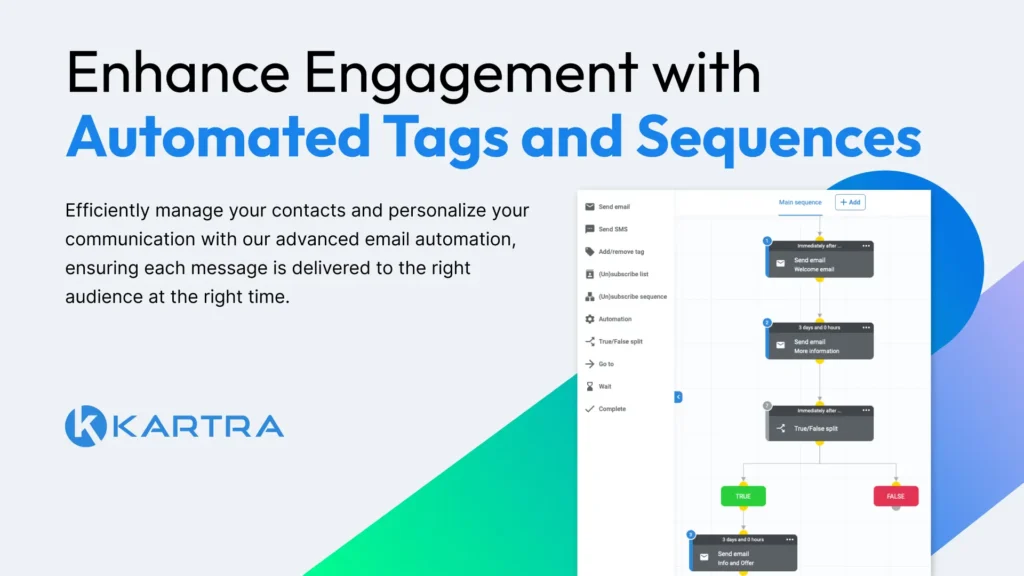
Types of Email Marketing Campaigns
A variety of email marketing campaigns can be leveraged to achieve specific business objectives:
- Newsletters
Regular newsletters keep your audience informed about the latest developments in your business. They are an excellent way to maintain continuous engagement.
- Promotional Campaigns
These campaigns are designed to promote new products or special offers. They can be timed to coincide with sales events or product launches.
- Welcome Emails
Send welcome emails to new subscribers to introduce them to your email list. These emails set the tone for future communication and give important information about our brand. This helps you build a strong connection that can lead to a long-term relationship.
- Transactional Emails
When customers make a purchase, you can send them emails to confirm the transaction and give them more information. This helps improve the customer’s experience.
- Re-engagement Emails
Send re-engagement emails to inactive subscribers so you can reignite their interest in your brand. These can be personalized to remind customers of what they’re missing. Use re-engagement emails to reintroduce subscribers to your brand’s value and encourage them to engage with your content again.
Getting Started with Email Marketing
Creating your first email marketing campaign
Creating your first email marketing campaign can seem daunting, but it’s easier than you think. First, define your campaign’s goal. Is it to drive traffic to your website, promote a new product, or increase customer loyalty? Then, craft your message around your goal. For instance, if your goal is to promote a new product, your message should include details about the product, a special offer, and a call to action (CTA).
Launching your first email marketing campaign can be a milestone for your business. It’s a process that involves several key steps, each important for the success of your campaign.
Step 1: Define Your Campaign Goals
Before you start crafting emails, it’s crucial to define what you want to achieve. Your campaign goals might include:
- Increasing website traffic: Directing subscribers to your website.
- Boosting product sales: Promoting specific products or services.
- Enhancing brand awareness: Educating your audience about your brand.
- Customer engagement: Encouraging interaction with your brand.
- Lead generation: Encouraging sign-ups or inquiries.
Step 2: Understand Your Audience
Knowing your audience is vital in email marketing. Consider the following:
- Demographics: Age, location, gender, etc.
- Interests and Behavior: What do they like, and how do they engage with emails?
- Pain Points: What problems can your product or service solve for them?
Step 3: Develop Your Content Strategy
Content is the heart of your campaign. Consider:
- Relevance: Ensure the content is relevant to your audience and goals.
- Value: Provide information, entertainment, or offers that are valuable to your audience.
- Frequency: Decide how often to send emails. Be consistent without overwhelming your subscribers.
- Variety: Mix promotional content with informative and engaging content.
Step 4: Create a Captivating Email Design
The design of your email should be both functional and appealing:
- Branding: Use colors, logos, and fonts consistent with your brand.
- Readability: Make sure text is easy to read on all devices.
- Visual Elements: Use high-quality images or graphics to enhance the message.
- CTA Placement: Ensure your call to action is prominent and clear.
Step 5: Craft a Compelling Subject Line
Your subject line determines whether your email is opened:
- Clarity: Be clear about the email’s content.
- Brevity: Keep it short and sweet.
- Intrigue: Pique curiosity without being clickbaity.
Step 6: Test and Optimize
Before the full launch:
- A/B Testing: Test different elements (like subject lines, email designs, and CTAs) to see what resonates best with your audience.
- Feedback: Gather feedback from a small segment of your audience if possible.
Step 7: Launch Your Campaign
Once everything is set:
- Scheduling: Choose the best time to send your emails based on your audience’s habits.
- Segmentation: Segment your list to tailor the campaign to different groups within your audience.
Step 8: Measure and Adjust
After your campaign is live:
- Analyze Key Metrics: Look at open rates, click-through rates, conversions, etc.
- Learn and Adjust: Use the insights to improve future campaigns.
Creating your first email marketing campaign involves thoughtful planning and execution. Follow these steps to create a successful campaign that connects with your audience. This is the key to delivering real results for your business.
If you want to learn what to send in each email, how many emails to send, and what to say at each stage of your email sequence, check out our article about building valuable email funnels.
Building and growing your email marketing list
An effective email marketing strategy starts with building a strong, engaged email list. This is a critical step in ensuring the success of your email marketing campaigns. Here’s how you can do it:
Understanding Lead Magnets
Lead magnets are things you give to people to get their email or contact info. They help you build your email list by giving something valuable to your audience.
Types of Lead Magnets
- Ebooks and Whitepapers: Offer in-depth information on a topic relevant to your audience.
- Webinars: Host informative webinars and require an email for registration.
- Discount Codes or Coupons: Perfect for e-commerce, offering a discount in exchange for an email.
- Free Trials: Allow users to experience your service first-hand before committing.
- Checklists and Templates: Provide easy-to-use tools or resources related to your industry.
- Email Courses: Offer a series of lessons delivered via email on a particular subject.
- Reports or Case Studies: Share insights, research, or success stories related to your field.
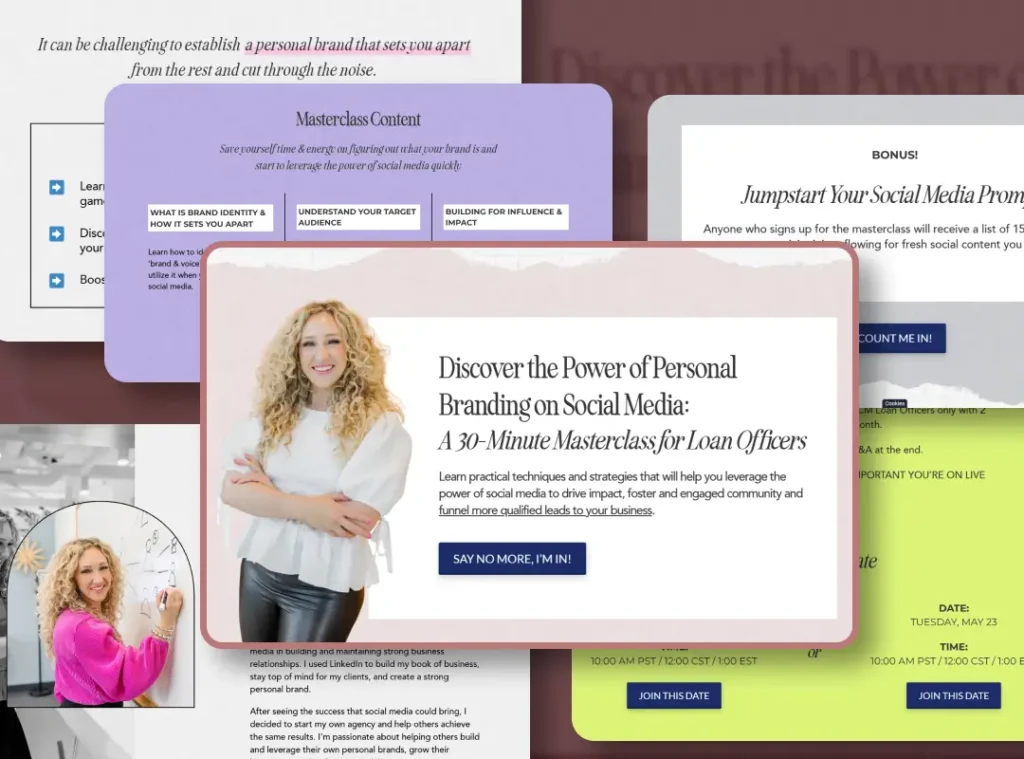
Creating Opt-In Pages
An opt-in page, also known as a landing page, is a web page designed solely to capture leads. It’s where your potential subscribers will decide whether or not to provide their email addresses.
Tips for High Converting Opt-In Pages
- Clear and Compelling headlines: Create a headline that grabs attention and clearly shows the benefit of your lead magnet.
- Simplicity is Key: Keep the design and content straightforward. Too much information can be overwhelming.
- Use Engaging Visuals: Images or videos related to the lead magnet can increase engagement.
- Include Social Proof: Testimonials, subscriber counts, or success stories can boost credibility.
- Strong Call to Action (CTA): Your CTA button should stand out and encourage immediate action. Use action-oriented language.
- Minimize Form Fields: Only ask for essential information. Usually, an email address (and maybe a first name) is enough.
- Mobile Optimization: Ensure your opt-in page looks great and functions well on mobile devices.
- A/B Testing: Regularly test different elements of your opt-in page (like headlines, CTAs, and images) to see what works best.
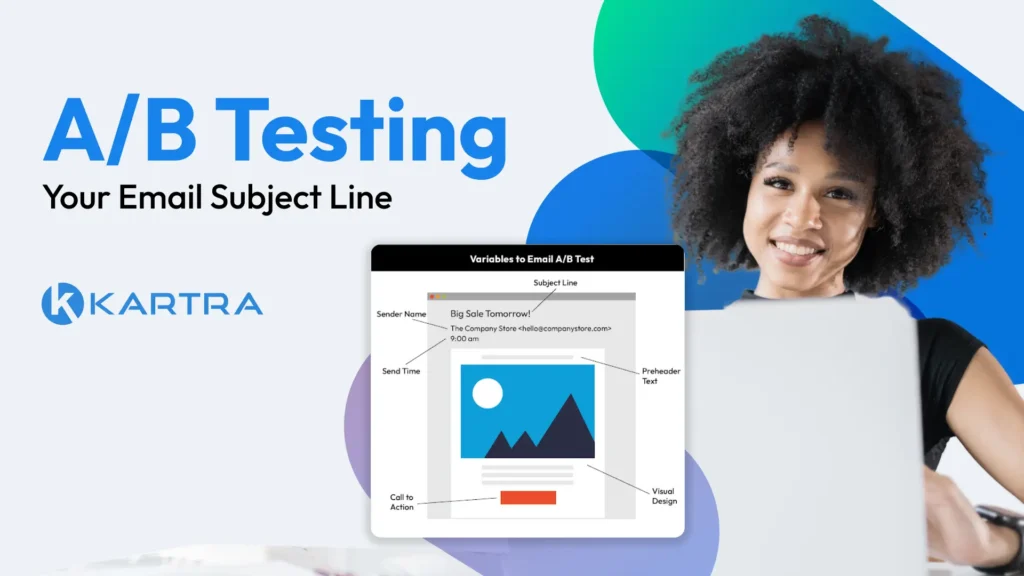
Implementing Your Strategy
- Choose Your Lead Magnet: Based on your audience’s interests and your business type, select a lead magnet that provides value.
- Design Your Opt-In Page: Create a landing page that highlights the benefits of your lead magnet and includes a simple sign-up form.
- Drive Traffic to Your Opt-In Page: Use your website, social media channels, paid ads, or guest blogging to drive traffic to your opt-in page.
- Optimize and Refine: Continuously analyze the performance of your opt-in page and lead magnet. Make adjustments based on the data you collect to improve conversion rates.
The goal is to offer something so valuable to your target audience that they can’t resist giving you their email address. By following these steps, you’ll build a large email list of engaged subscribers.
Best practices for email marketing
To ensure your email marketing efforts are effective, follow these best practices:
- Personalize your Emails: Use your subscriber’s name and provide content relevant to their interests.
- Make Emails Mobile-Friendly: More people are reading emails on their mobile devices.
- Include Clear CTAs: Your emails should have a clear call-to-action.
- Test and Optimize: Constantly test different elements of your emails, like subject lines and images, to see what works best.
Automating your email marketing efforts
Email marketing automation tools save time and improve campaign effectiveness. They send emails automatically based on a subscriber’s actions, such as signing up for a newsletter or making a purchase.
Automation also helps segment your audience and send personalized emails, increasing engagement and conversions.
Email marketing automation is a powerful tool that can make your campaigns more efficient and effective. It uses software to automatically send emails based on triggers and schedules you set. Here’s how to effectively automate your email marketing.
Understanding Email Marketing Automation
Email marketing automation is the process of sending out emails at predetermined times or in response to certain actions taken by your subscribers. It’s about sending the right message to the right person at the right time, without the need for manual input every time.
- Time-saving: Once set up, email campaigns run themselves.
- Personalization: Automate personalized messages to different segments of your audience.
- Consistency: Maintain regular communication with your audience without manual effort.
- Efficiency: Improve response times to customer actions, like sending a welcome email immediately after a subscription.
Setting Up Email Automation
- Choose an Email Marketing Platform: Select a platform that offers automation features like Kartra, the ultimate all-in-one business platform.
- Segment Your Audience: Create different lists or segments based on customer behavior, preferences, or demographics.
- Define Triggers: Create triggers for automatic emails, like a welcome email when someone signs up, a birthday email, or a follow-up email after a purchase.
- Craft Your Messages: Write the content for each automated email. Ensure that it’s relevant and valuable to the segment it’s targeting.
- Test and Optimize: Before fully automating, test your emails to ensure they work as expected. Use A/B testing to optimize subject lines, content, and send times.
Types of Automated Email Campaigns
- Welcome Series: Send a series of emails to new subscribers to introduce them to your brand.
- Abandoned Cart Emails: Remind customers who left items in their cart to complete their purchase.
- Re-engagement Campaigns: Target subscribers who haven’t interacted with your emails for a certain period.
- Post-Purchase Follow-up: Send emails after a purchase to thank the customer, ask for feedback, or suggest related products.
- Event-Triggered Emails: These are sent based on specific actions, like downloading a content resource or visiting a particular webpage.
Monitoring and Improving Your Automation Strategy
- Analyze Performance: Regularly check the performance of your automated emails. Look at open rates, click-through rates, and conversion rates.
- Adjust Based on Feedback: Use customer feedback and analytics to refine your automation strategy.
- Update Content Regularly: Keep your automated emails up-to-date with fresh content and offers.
Automating emails makes it easier to personalize, target, and time interactions with your audience. Doing this well can help you build stronger relationships with your email subscribers. Plus you’ll also get increased engagement and earn more money.
To learn more, you can click to read our article: How to Use Email Marketing Automation to Catapult Growth.
Setting goals for your email marketing
Setting specific goals for your email marketing campaigns is essential. These could include increasing your open rates, boosting click-through rates, or generating more leads. Make sure your goals are measurable so you can track your progress and adjust your strategy as needed.
Choosing the Right Email Marketing Tools
Understanding the Importance of Email Service Providers (ESPs)
Choosing the right Email Service Provider (ESP) is a critical decision in your email marketing strategy. ESPs are not just for sending emails. They are powerful tools that can make your email marketing much more effective.
Key Features of ESPs:
- Deliverability: ESPs help ensure that your emails reach the inbox of your subscribers, reducing the risk of being marked as spam.
- Scalability: They can handle large volumes of emails, growing with your business.
- Integration: ESPs can connect with other marketing tools and CRM systems to create a smooth marketing experience.
- Compliance: They assist in complying with email regulations like GDPR and CAN-SPAM.
Choosing the Right ESP:
- Assess Your Needs: Consider the size of your email list, the complexity of your campaigns, and your technical expertise.
- Evaluate Features: Look for key features like automation, segmentation capabilities, and analytics.
- Consider User Experience: Choose an ESP that is user-friendly and matches your team’s skill level.
- Customer Support: Good customer support can be invaluable, especially when you encounter issues or have questions.
- Consider Integration: choose an ESP that seamlessly integrates with your other marketing software.
Utilizing Email Marketing Software
Email marketing software is an essential tool for designing, sending, and tracking email campaigns. It’s important to choose software that fits your specific marketing needs.
Don’t know what features you need? Here are the top 10 features the best email automation software will give you.
Advantages of Using Email Marketing Software:
- Customizable Templates: Most email marketing software offers a range of templates that can be customized to fit your brand.
- List Management: Efficiently manage and segment your email list for targeted campaigns.
- Detailed Analytics: Track your campaign’s performance by checking open rates, click-through rates, and conversions.
- A/B Testing: Test different elements of your emails to see what resonates best with your audience.
Creating Effective Email Templates
A good email template can greatly affect how well your email marketing works.
Tips for Effective Email Templates:
- Brand Consistency: Ensure your emails consistently reflect your brand’s style and tone.
- Readability: Use fonts and colors that are easy to read. Break text into small paragraphs.
- Visual Appeal: Include high-quality images or graphics but avoid clutter.
- Responsive Design: Ensure your templates are responsive and look good on both desktop and mobile devices.
Optimizing Your Email Subject Lines
The subject line is a critical element of your email and can determine whether your email is opened or not. Emails that don’t get opened, don’t get clicks, and emails that don’t get clicked, don’t make sales. So let’s help you write better email subject lines:
Tips for Better Subject Lines:
- Personalization: Including the subscriber’s name or other personal details can increase open rates.
- Clarity and Relevance: Clearly state the value or intent of your email.
- Urgency and Curiosity: Phrases that create a sense of urgency or curiosity can encourage subscribers to open the email.
- Split Testing: Use A/B testing to experiment with different subject lines and find the most effective one for your audience.
If you’re serious about getting people to open your email, check out our other article: 6 Email Subject Line Formulas Guaranteed to Boost Your Open Rates.
Remember, an effective email marketing strategy includes the content you create and the tools and practices you use to deliver it.
Let’s Wrap it Up
Email marketing is a great way to boost your business online. It’s not just about sending emails; it’s about connecting with people in a way that’s valuable to them.
This helps build strong relationships and increase sales. You can keep your customers interested with newsletters, special deals, and more. The key is to know your audience, create emails they’ll love, and use the right tools to send them out.
Make your emails easy to read on phones and keep improving your approach by looking at what works best. Every email is a chance to make your brand stronger and keep your customers coming back.
Start using email marketing as a key part of your strategy and watch your business grow! Sign up for Kartra to get everything you need to succeed.
About Kartra
This blog is brought to you by Kartra, the all-in-one online business platform that gives you every essential marketing and sales tool you need to grow your business profitably – from sales pages and product carts to membership sites, help desks, affiliate management and more. To learn how you can quickly and easily leverage Kartra to boost your bottom-line, please visit kartra.com.

